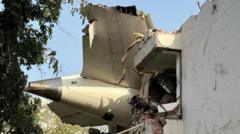A recent study highlights that significant climate damage from jet contrails could be mitigated with minimal costs, by slightly tweaking flight patterns.
**Simple Solutions Proposed to Curb Climate Impact of Jet Contrails**

**Simple Solutions Proposed to Curb Climate Impact of Jet Contrails**
Experts suggest that affordable adjustments in aviation practices could drastically reduce the warming effects of contrails ahead of COP29.
Jet aircraft are the source of contrails — streaks of vapor trails that impact the climate more than previously understood. As discussions prepare for COP29 in Baku, researchers outline that a few simple modifications in flight paths could dramatically lessen the global warming effects generated by these trails.
Contrails, also known as condensation trails, are formations resulting when jet engines release water vapor into cold, humid air, leading to the condensation of gaseous emissions into visible streaks. Alongside the well-documented carbon emissions from the aviation sector, these contrails contribute to the greenhouse effect, effectively doubling the warming impact of aviation’s fossil fuel consumption.
Experts from the Transport & Environment group stress that despite the confusion fueled by unfounded conspiracy theories about “chemtrails,” there is no scientific backing to such claims. They caution against such distractions as policymakers aim for effective climate strategies.
With over 80% of contrail-related warming stemming from just 3% of flights, a potential breakthrough lies in modifying the air routes of a select number of aircraft. Adjustments could reduce contrail warming by half within the next two decades at a modest expense of around £4 per flight.
Data shows that flights traversing North America, Europe, and the North Atlantic are primarily responsible for more than half of the global warming from contrails, especially in winter and during nighttime operations when warming impacts are most pronounced.
As noted by Carlos Lopez de la Osa, “We already navigate around thunderstorms; we can add contrail avoidance to our planning.” This simple yet effective strategy could facilitate substantial climate mitigation without the heavy financial burden often associated with other climate solutions.
Researchers intend to use the COP29 platform to increase awareness about this pressing issue and the straightforward solutions available. While there’s substantive investment in developing sustainable aviation fuels, tackling contrails presents a unique opportunity to achieve significant climate benefits with minimal investment.






















